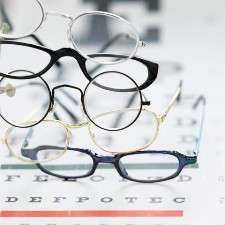Researchers discover a link between sharp vision and the brain's processing speed

Middle-aged adults who suddenly need reading glasses, patients with traumatic brain injuries, and people with visual disorders such as "lazy eye" may have one thing in common—"visual crowding," an inability to recognize individual items surrounded by multiple objects. Visual crowding makes it impossible to read, as single letters within words are rendered illegible. And basic cognitive functions such as facial recognition can also be significantly hampered. Scientists and clinicians currently attribute crowding to a disorder in peripheral vision.
Now Prof. Uri Polat, Maria Lev, and Dr. Oren Yehezkel of Tel Aviv University's Goldschleger Eye Research Institute at the Sackler Faculty of Medicine have discovered new evidence that correlates crowding in the fovea—a small part of the retina responsible for sharp vision—and the brain's processing speed. These findings, published in Nature's Scientific Reports, could greatly alter earlier models of visual crowding, which emphasized peripheral impairment exclusively. And for many adults lost without their reading glasses, this could improve their vision significantly.
"Current theories strongly stress that visual crowding does not exist in the fovea, that it's a phenomenon that exists only in peripheral visual fields," said Prof. Polat. "But our study points to another part of the eye altogether—the fovea—and contributes to a unified model for how the brain integrates visual information."
A trained eye
According to Prof. Polat, vision is dynamic and changes rapidly, but it takes time for the brain to process this visual information. Rapidly moving tickers on TV, or traffic signs seen as the driver speeds past, are difficult for anyone to read. However, given enough time, someone with excellent vision can fully recognize the words. Those with slower processing speeds—usually the result of poor perceptive development or age—may not be able to decipher the tickers or the traffic signs. In the study, Prof. Polat employed his expertise in improving vision by retraining the brain and the foveal part of the eye, using exercises in which speed is a key element.
"Training adults to reduce foveal crowding leads to improved vision. A similar training we conducted two years ago allowed adults to eliminate their use of reading glasses altogether, using a technology provided by the GlassesOff company. Other patients who had lost sharp vision for whatever reason were also able to benefit from the same training and improve their processing speed and visual capabilities," said Prof. Polat.
Maria Lev, who performed the study as a part of her doctoral thesis, said one young subject had experienced significant limitations in school for years and had been unable to obtain a driver's license due to severe visual impairment from foveal crowding. After undergoing training that emphasized a foveal rather than a peripheral focus, he was able to overcome the handicap.
"He finally managed to learn to read properly and found his way forward," said Lev. "I'm proud to say that today he is not only eligible for a driver's license, he's also been able to earn his master's degree."
Prof. Polat and his team are currently exploring how visual integration and foveal crowding develop in various clinical cases.



















